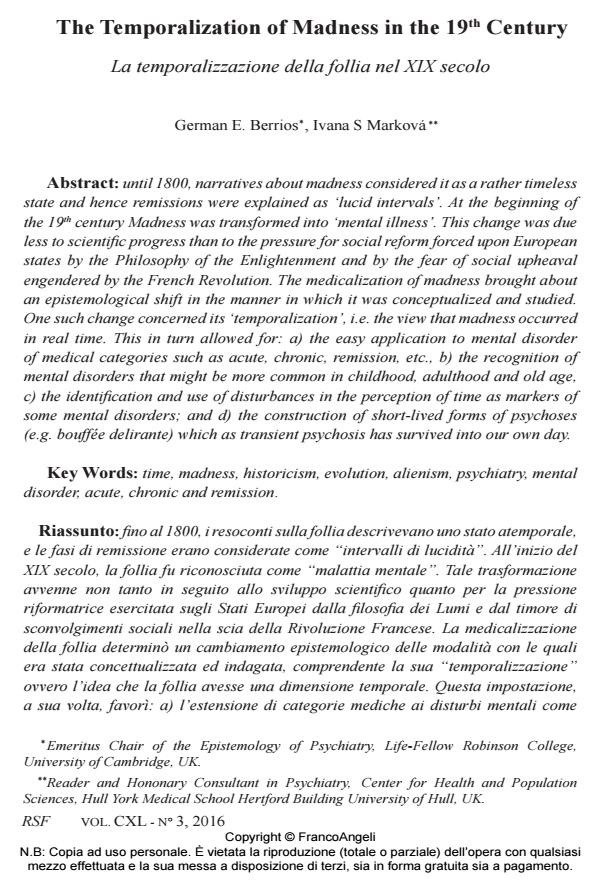The Temporalization of Madness in the 19th Century.
Journal title RIVISTA SPERIMENTALE DI FRENIATRIA
Author/s German E. Berrios, Ivana S Markovà
Publishing Year 2016 Issue 2016/3
Language English Pages 15 P. 13-27 File size 640 KB
DOI 10.3280/RSF2016-003002
DOI is like a bar code for intellectual property: to have more infomation
click here
Below, you can see the article first page
If you want to buy this article in PDF format, you can do it, following the instructions to buy download credits

FrancoAngeli is member of Publishers International Linking Association, Inc (PILA), a not-for-profit association which run the CrossRef service enabling links to and from online scholarly content.
Until 1800, narratives about madness considered it as a rather timeless state and hence remissions were explained as ‘lucid intervals’. At the beginning of the 19th century Madness was transformed into ‘mental illness’. This change was due less to scientific progress than to the pressure for social reform forced upon European states by the Philosophy of the Enlightenment and by the fear of social upheaval engendered by the French Revolution. The medicalization of madness brought about an epistemological shift in the manner in which it was conceptualized and studied. One such change concerned its ‘temporalization’, i.e. the view that madness occurred in real time. This in turn allowed for: a) the easy application to mental disorder of medical categories such as acute, chronic, remission, etc., b) the recognition of mental disorders that might be more common in childhood, adulthood and old age, c) the identification and use of disturbances in the perception of time as markers of some mental disorders; and d) the construction of short-lived forms of psychoses (e.g. bouffée delirante) which as transient psychosis has survived into our own day.
Keywords: Time, madness, historicism, evolution, alienism, psychiatry, mental disorder, acute, chronic and remission.
- Values in Psychiatry German E. Berrios, Ivana S. Marková, pp.5 (ISBN:9781108883535)
German E. Berrios, Ivana S Markovà, The Temporalization of Madness in the 19th Century. in "RIVISTA SPERIMENTALE DI FRENIATRIA" 3/2016, pp 13-27, DOI: 10.3280/RSF2016-003002